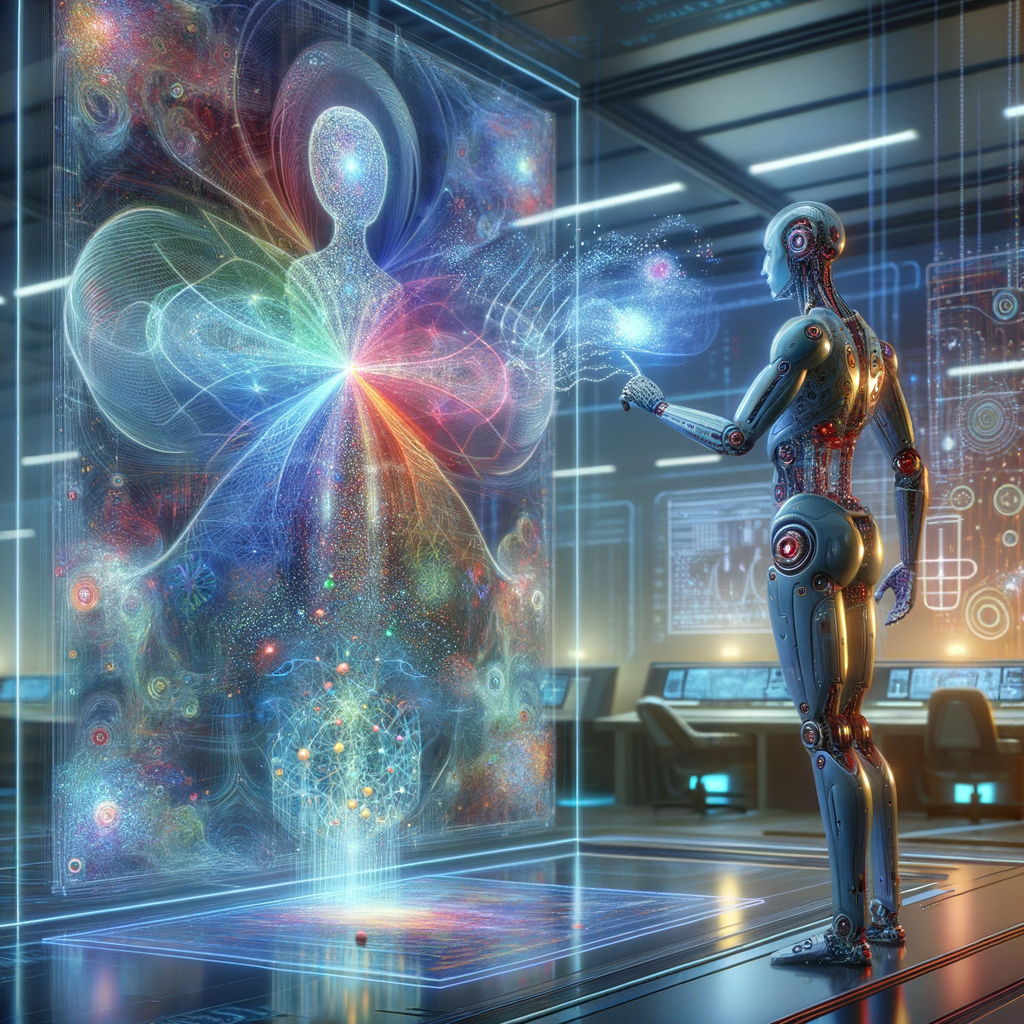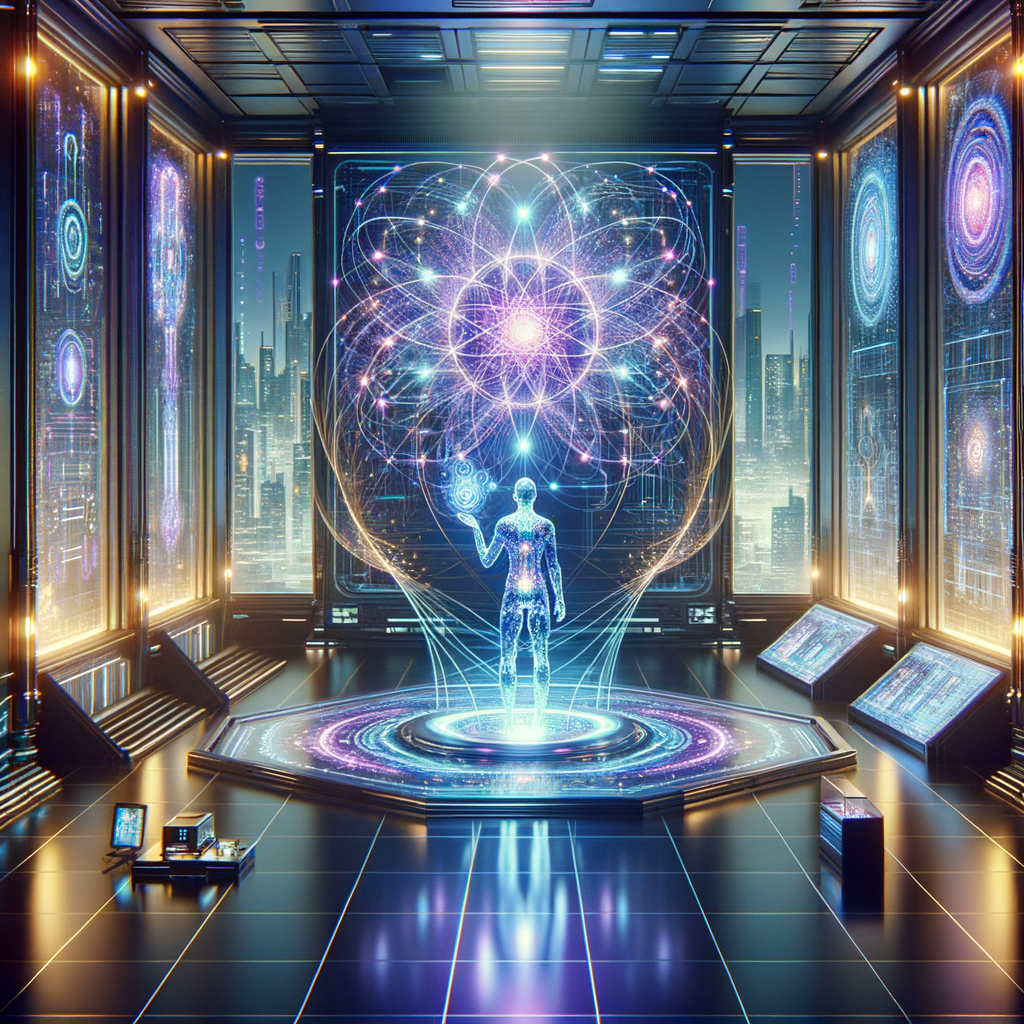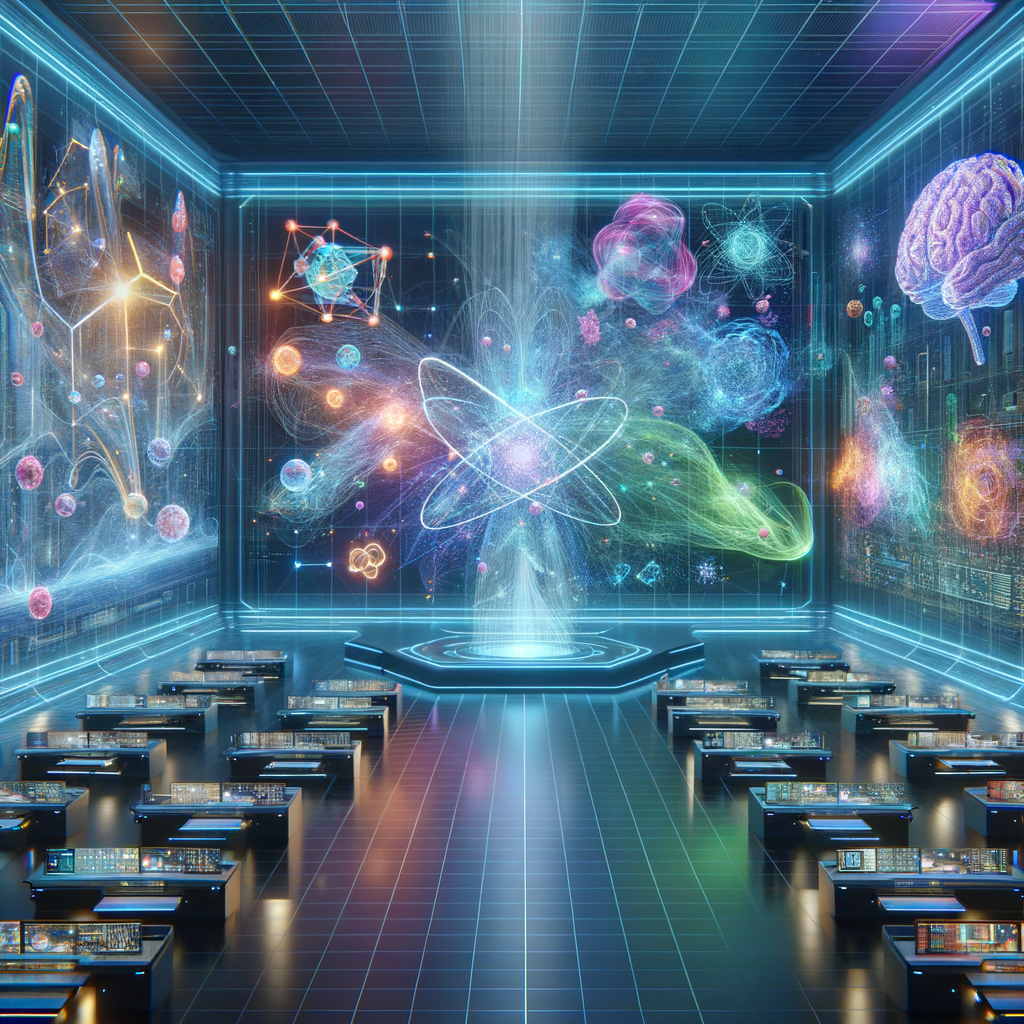 © 2023 / 2024 - QHIQ
© 2023 / 2024 - QHIQIntroduction to Quantic Holographic AI
Quantic Holographic Artificial Intelligence (QHAI) represents the convergence of quantum computing and holography with traditional AI methodologies. This novel approach propels AI capabilities beyond the conventional constraints of binary logic, leveraging quantum entanglement, superposition, and holographic principles to process information in fundamentally new ways.
Core Concepts
At the heart of QHAI is the concept of quantic bits or qubits, which unlike classical bits, can exist in multiple states simultaneously. This enables parallelism on an unprecedented scale. Holography enhances this by encoding and retrieving information using light waves, which allows for intricate patterns to be stored and computed. The marriage of these two technologies facilitates the creation of sophisticated AI models with enhanced problem-solving abilities, particularly in areas such as pattern recognition, optimization, and complex data analytics.
Algorithmic Foundations
One of the key breakthroughs in QHAI is the development of quantum algorithms that leverage holographic data structures. An exemplary algorithm is the Quantum Fourier Transform (QFT), integral for tasks such as Shor's algorithm for factoring large numbers, which has profound implications for cryptography. Here's a simplified representation:
import numpy as np
from qiskit import QuantumCircuit
qc = QuantumCircuit(3)
qc.h(0)
qc.cx(0, 1)
qc.cx(0, 2)
qc.h(1)
qc.h(2)
qc.draw()
Recent Advancements
Recent years have seen significant strides in QHAI. Notably, quantum supremacy demonstrated by Google's Sycamore processor underscored quantum computing's potential. Parallel advancements in optical holography, particularly the development of digital holographic microscopy, allow for more precise and scalable holographic data processing. These technologies collectively enable QHAI systems to tackle computationally intractable problems with new efficiency.
Challenges and Solutions
Despite its promises, QHAI faces considerable challenges. Quantum decoherence, where qubits lose their quantum state, is a significant hurdle. This issue necessitates advanced error correction methods. Scalability also remains problematic; however, hybrid quantum-classical systems are emerging as practical solutions, enabling near-term applicability while full-scale quantum systems are perfected.
Managing a Startup in Emerging Tech
Running a startup in the cutting-edge realm of QHAI is fraught with challenges. Securing funding is particularly difficult given the speculative nature of the technology. We at QHIQ have taken a phased approach, concentrating on achieving incremental milestones to demonstrate value continually. Recruiting talent also poses difficulties; attracting individuals versed in both quantum mechanics and AI requires offering compelling projects and an innovative work environment.
Industry Applications and Future Prospects
QHAI's potential applications span diverse fields. In healthcare, it can revolutionize drug discovery by simulating molecular interactions. In finance, it could optimize trading strategies and risk assessment. The future of QHAI may involve convergence with other emerging technologies such as blockchain and IoT, creating an intertwined ecosystem of advanced capabilities. Our vision is a world where QHAI not only solves problems deemed insurmountable today but also fosters new paradigms of intelligence and innovation.
Conclusion
Quantic Holographic AI stands on the frontier of scientific and technological innovation, merging the complexities of quantum mechanics with the tangible applications of artificial intelligence. While challenges abound, the potential for transformative impact across industries renders it a pursuit of profound significance. At QHIQ, we are committed to driving this revolution forward, marrying theoretical insights with practical applications to redefine what's possible in AI.


















































